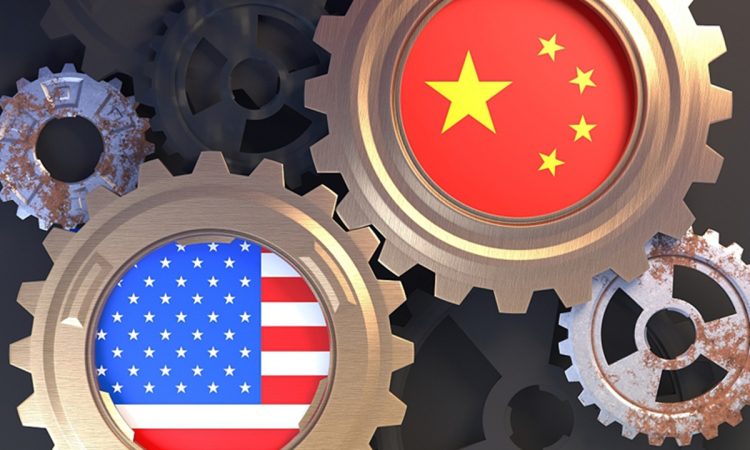U.S.-China trade relations have been a cornerstone of global economics for decades, and in recent years, these relations have faced considerable strain due to tariffs, trade disputes, and shifting economic policies. The trade war, which started during the administration of President Donald Trump and has continued to shape economic dynamics under President Joe Biden, has far-reaching implications for American investors. As the world’s two largest economies clash over issues such as intellectual property, market access, and manufacturing dominance, American investors must remain attuned to the shifting landscape of global trade.
In this article, we’ll delve into the current state of U.S.-China trade relations, how trade disputes affect American companies and global supply chains, expert predictions about the future of this economic rivalry, and practical investment advice for those exposed to these global trade dynamics.
1. The State of U.S.-China Trade Relations and the Impact of Tariffs
The U.S.-China trade war began in earnest in 2018 when the Trump administration imposed tariffs on billions of dollars’ worth of Chinese goods, citing concerns over unfair trade practices, intellectual property theft, and the trade deficit. China responded with tariffs on U.S. products, ranging from agricultural goods to consumer electronics. These retaliatory tariffs led to a significant escalation in trade tensions, creating volatility in global markets.
While the Biden administration initially sought to ease the tensions and roll back some tariffs, the broader framework of U.S.-China economic rivalry remains intact. In recent years, trade negotiations have shifted from broad tariffs to more targeted issues such as technology transfer, cybersecurity, and supply chain resilience.
Tariffs and Their Effect on U.S. Imports and Exports
The imposition of tariffs on Chinese goods has had a mixed impact on U.S. companies. On the one hand, American consumers have felt the burden of higher prices on many Chinese-made products, including electronics, clothing, and toys. On the other hand, some U.S. companies have found alternative markets or suppliers outside China to mitigate the impact of tariffs.
However, the main long-term impact has been on industries with heavy exposure to Chinese manufacturing. For example, U.S. companies in the technology, automotive, and manufacturing sectors have faced higher input costs due to tariffs on Chinese goods. In turn, this has led to cost-push inflation, affecting profit margins for American firms that rely on Chinese components or finished products.
Shifting Tariffs: A Geopolitical Lever
Tariffs in the U.S.-China trade war also serve as a geopolitical lever in a broader economic struggle for dominance. Both countries have used tariffs as a means to exert pressure on the other side, hoping to push the other party into concessions on issues such as market access, technology transfer, and intellectual property protection.
The tariffs have also led to the creation of new economic partnerships and trade alliances. For example, as U.S. tariffs on China increased, China sought to expand its trade relationships with other countries, particularly within Asia, the European Union, and Africa. The European Union and Japan, for instance, have increased trade relations with China, thereby diminishing the impact of U.S. trade restrictions.
2. How Trade Disputes Affect American Companies and Global Supply Chains
Trade disputes between the U.S. and China have far-reaching consequences beyond tariffs. Global supply chains, which have been interconnected for years, were disrupted by the trade war, and many American companies had to rethink their sourcing strategies.
Supply Chain Diversification and Relocation
One of the immediate effects of the U.S.-China trade war was the accelerated move by many American companies to diversify their supply chains. Seeking to avoid tariffs and reduce their dependence on Chinese manufacturing, U.S. firms began looking to other countries in Southeast Asia, Latin America, and even India for production.
The relocation of supply chains has not been without its challenges. Shifting production out of China often requires significant investments in new infrastructure, new labor markets, and adapting to different regulatory environments. Countries like Vietnam, Malaysia, and Mexico have benefited from this shift, as many firms have sought alternative low-cost manufacturing locations.
Disruption in the Tech Sector
In particular, the tech sector has faced significant disruptions due to trade restrictions. The U.S. has imposed export bans on certain Chinese companies, most notably Huawei, citing national security concerns. This has forced American companies to find new suppliers for critical components like semiconductors and networking equipment. Moreover, some U.S. companies, such as Apple, have started to look at diversifying their manufacturing operations outside China to mitigate the risks posed by ongoing trade tensions.
While some companies have successfully navigated these challenges, the broader economic uncertainty has caused supply chain bottlenecks, product delays, and increased costs for both manufacturers and consumers. Additionally, the semiconductor shortage, exacerbated by the trade war, has affected global supply chains, not just in tech but across industries like automotive and consumer electronics.
The Impact on Agricultural Exports
Another notable area of impact has been the agricultural sector. As China is a major importer of U.S. agricultural goods, the tariffs imposed by China on American farm products such as soybeans, pork, and wheat have had a devastating effect on U.S. farmers. Many farmers, particularly in the Midwest, were hit hard by the trade dispute, leading to financial instability and the loss of markets.
In response, the U.S. government introduced bailout programs for farmers impacted by tariffs, but these programs were not always sufficient to fully offset the losses. Moreover, the disruption in trade flows has prompted American farmers to look for alternative markets in Europe, Africa, and Latin America, but such shifts take time and investment.

3. Expert Predictions on the Future of U.S.-China Economic Relations
While the Biden administration has taken a more diplomatic approach to U.S.-China relations compared to its predecessor, the underlying issues that sparked the trade war—such as intellectual property theft, China’s industrial policy, and its growing influence in global markets—remain unresolved.
Ongoing Technological and Trade Rivalry
Experts predict that the technological rivalry between the U.S. and China will continue to intensify in the coming years. China’s push for technological self-sufficiency, coupled with its “Made in China 2025” initiative, seeks to reduce reliance on foreign technology, particularly in high-tech industries like semiconductors, AI, and telecommunications.
This economic competition, coupled with geopolitical tensions over issues such as Taiwan and the South China Sea, means that the U.S. will continue to view China as both a trading partner and a strategic competitor. The future of trade relations may involve ongoing tariffs, export controls, and diplomatic negotiations, particularly as the two countries try to secure their positions as global leaders in technology and innovation.
Decoupling of the U.S. and China
In the long term, some experts foresee the possibility of a “decoupling” of the U.S. and Chinese economies. While complete separation is unlikely, economic ties may continue to weaken in certain sectors, particularly high-tech industries. This could lead to the creation of separate global supply chains for the U.S. and China, with countries such as India, South Korea, and Japan serving as key players in the U.S.-led supply chain network.
A New Era of Trade Alliances
At the same time, there is hope that U.S.-China relations could stabilize as both countries recognize the mutual benefits of trade. Experts believe that both sides may come to an understanding on issues like market access and intellectual property, leading to a new phase of cooperation in areas such as clean energy, healthcare, and infrastructure.
However, even if tensions ease, the U.S. and China will continue to have competing economic and strategic interests, which will shape the future of their trade relations.
4. Practical Investment Advice for Those Exposed to Global Trade Dynamics
For American investors, the U.S.-China trade war presents both risks and opportunities. Understanding how trade disputes can affect various sectors is crucial for making informed investment decisions.
Sectors Benefiting from the Trade War
- Technology and Semiconductor Companies: Companies that produce semiconductors, such as TSMC, NVIDIA, and Intel, stand to benefit as the U.S. and China seek to reduce their dependency on each other’s technology. Semiconductor shortages, combined with trade restrictions, have boosted demand for U.S.-made chips.
- Alternative Manufacturing Locations: Companies that have shifted their supply chains to countries like Vietnam, India, and Mexico may offer attractive investment opportunities as they gain market share in manufacturing. ETFs focused on emerging markets, particularly in Asia, can offer exposure to these sectors.
- Agriculture Exporters: As China seeks to reduce its reliance on U.S. agricultural products, U.S. farmers are looking to alternative markets. Investing in agricultural ETFs or companies that export U.S. farm products can be a hedge against trade disputes.
Sectors Vulnerable to Trade Tensions
- Consumer Electronics: Companies like Apple, whose products are manufactured in China, are vulnerable to trade tariffs that could increase production costs. Investors should be cautious about exposure to companies reliant on Chinese supply chains.
- Industries with High Chinese Exposure: Any U.S. company heavily dependent on China for sales or production could face significant challenges if tariffs or restrictions increase. These companies could include automakers, retailers, and tech firms.
- Energy and Natural Resources: Trade disputes can affect the global demand for commodities like oil, gas, and rare earth materials, which are crucial to the tech and manufacturing sectors. Keeping an eye on supply chain disruptions in the energy sector can help investors make informed decisions.
Conclusion
The ongoing U.S.-China trade dispute will continue to shape the global economic landscape for the foreseeable future. Investors must stay informed about the evolving trade policies, geopolitical tensions, and their impacts on specific industries. While there are clear risks, particularly for companies reliant on Chinese manufacturing
or market access, there are also opportunities in sectors that are diversifying away from China or capitalizing on the technological rivalry. By carefully analyzing the shifting dynamics of U.S.-China relations, investors can position themselves to navigate this complex trade war effectively.






























